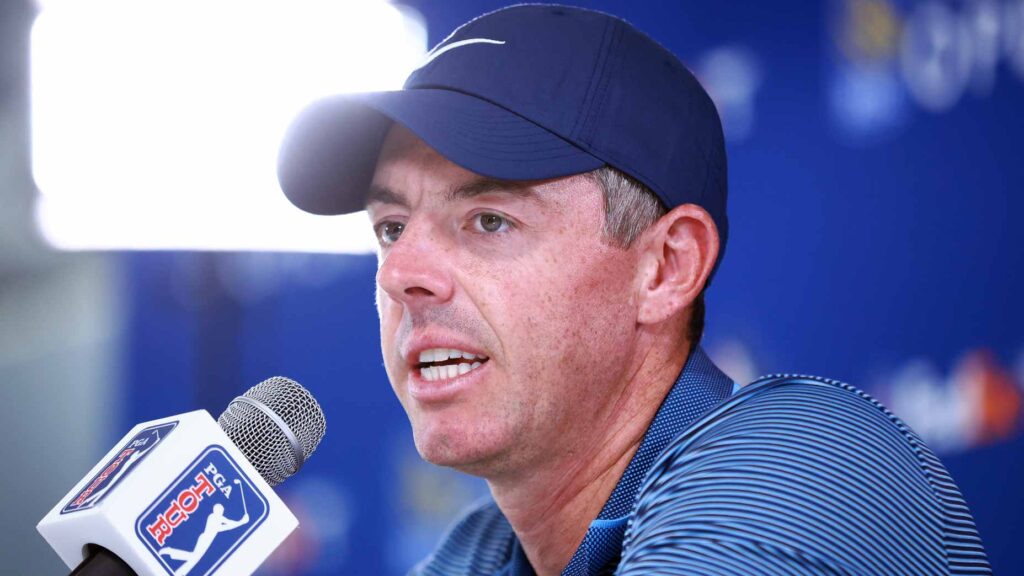Rory McIlroy: Reflections on the PGA Championship and Media Dynamics
By Dylan Dethier
Published: June 4, 2025
The recent PGA Championship was a rollercoaster for Rory McIlroy, marked by unexpected silence from the star golfer. Fans and media alike were left speculating about his motivations and state of mind. McIlroy, however, emerged before the RBC Canadian Open with a candid explanation, shedding light on his experience during the major tournament and his relationship with media scrutiny.
McIlroy’s Silence: A Choice or Necessity?
The irony of McIlroy’s decision to skip media engagements during the PGA Championship was poignant. Was his silence a reflection of poor performance, or perhaps dissatisfaction with recent media coverage? Or maybe it stemmed from a simple desire to prioritize personal time? On the eve of the RBC Canadian Open, McIlroy clarified that his choice was merely a matter of mood: "Some days you don’t feel like talking.” This simple statement, however, encapsulates the complex dynamics between professional athletes and media.
Circumstances That Shaped McIlroy’s Week
In his remarks, McIlroy provided an insightful narrative about his week at Quail Hollow. His tee time delays and fatigue from long days on the course contributed to his silence. On the first day, poor performance prompted him to practice instead of engaging with the press. When the unfortunate driver incident made headlines, his focus shifted to personal matters, particularly wanting to spend time with family.
The Driver Incident: Understandably Frustrating
Beyond the logistical hurdles, McIlroy’s frustration about the driver testing incident indicated deeper concerns. Reports suggested that several players had undergone similar testing, yet McIlroy’s name was released, igniting various speculations. He expressed his displeasure that his results were leaked, stating, "I was a little pissed off because I knew that Scottie’s driver had failed on Monday, but my name was the one that was leaked.”
Media Responsibility: A Two-Way Street
When discussing responsibilities, McIlroy suggested that athletes are under no obligation to respond to every media question. His thoughts echoed sentiments from other players about the evolving dynamics between golfers and the press. Acknowledging the arrival of social media, McIlroy highlighted that athletes can now communicate directly with fans, reducing their dependence on traditional media channels. "We could just bypass you guys and go on social media," he remarked, illustrating the significant shift in how athletes interact with their audience.
Navigating the Press: The Need for Balance
Despite expressing a desire for less media interaction, McIlroy recognized the necessity of a balanced relationship. He acknowledged that while skipping interviews is within their rights, maintaining open lines of communication with reporters is essential. "It’s a two-way street," he claimed, aiming to convey the mutual benefit of interactions between players and reporters. He noted the potential for misunderstandings and emphasized the need for respectful dialogue.
Canadian Open: A Traditional Challenge
As McIlroy transitioned into discussions about the RBC Canadian Open, he described the course’s setup and his preparation for the tournament. His affection for national opens is evident, especially since the Canadian Open serves as crucial preparation for the U.S. Open. The correlation between his performance at the Canadian Open and subsequent success at U.S. Opens was marked, with six top-10 finishes following participation.
Fighting Motivation: Post-Masters Reflection
McIlroy shared candidly about the challenges players face after significant tournaments. Reflecting on the post-Masters letdown, he admitted that regaining motivation could be tough. He recognized the psychological toll from long hours of practice, emphasizing the importance of mental resilience in maintaining peak performance. His father’s influence on his positive mindset was evident in his remarks, demonstrating how personal experiences shape professional lives.
Examining Player-Media Relations
While McIlroy’s remarks opened the door for broader discussions on player-media relations, significant questions remain unresolved. Should professional golf adopt more transparent testing protocols? The effect of ambiguous media dynamics often leads to speculation, and players like McIlroy feel the pressure of such scrutiny—balancing the desire for privacy with the demands for public accountability.
Conclusion: The Future of Player Interactions
As McIlroy prepares for the RBC Canadian Open, the questions surrounding him remain multifaceted. His reflections highlight important aspects of balancing personal space while maintaining a connection with the audience. As both golf and media landscapes continue to evolve, it will be fascinating to watch how players, like McIlroy, navigate these complex relationships during their careers.
As McIlroy stepped away from the press conference, it was clear that, while no interview sessions can be guaranteed, fans and reporters would continue to seek insights into his journey. McIlroy’s ability to articulate his thoughts reflects an evolving understanding of both the pressures and responsibilities of his position as a leading figure in professional golf. As we look forward to the upcoming tournaments, his journey will undoubtedly remain a focal point in the golf world.
This article delves into Rory McIlroy’s recent experiences, unpacking his thoughts on media and competition, along with his approaches to navigating the intricacies of professional golf. We invite readers to stay tuned for more insights as the season progresses.


